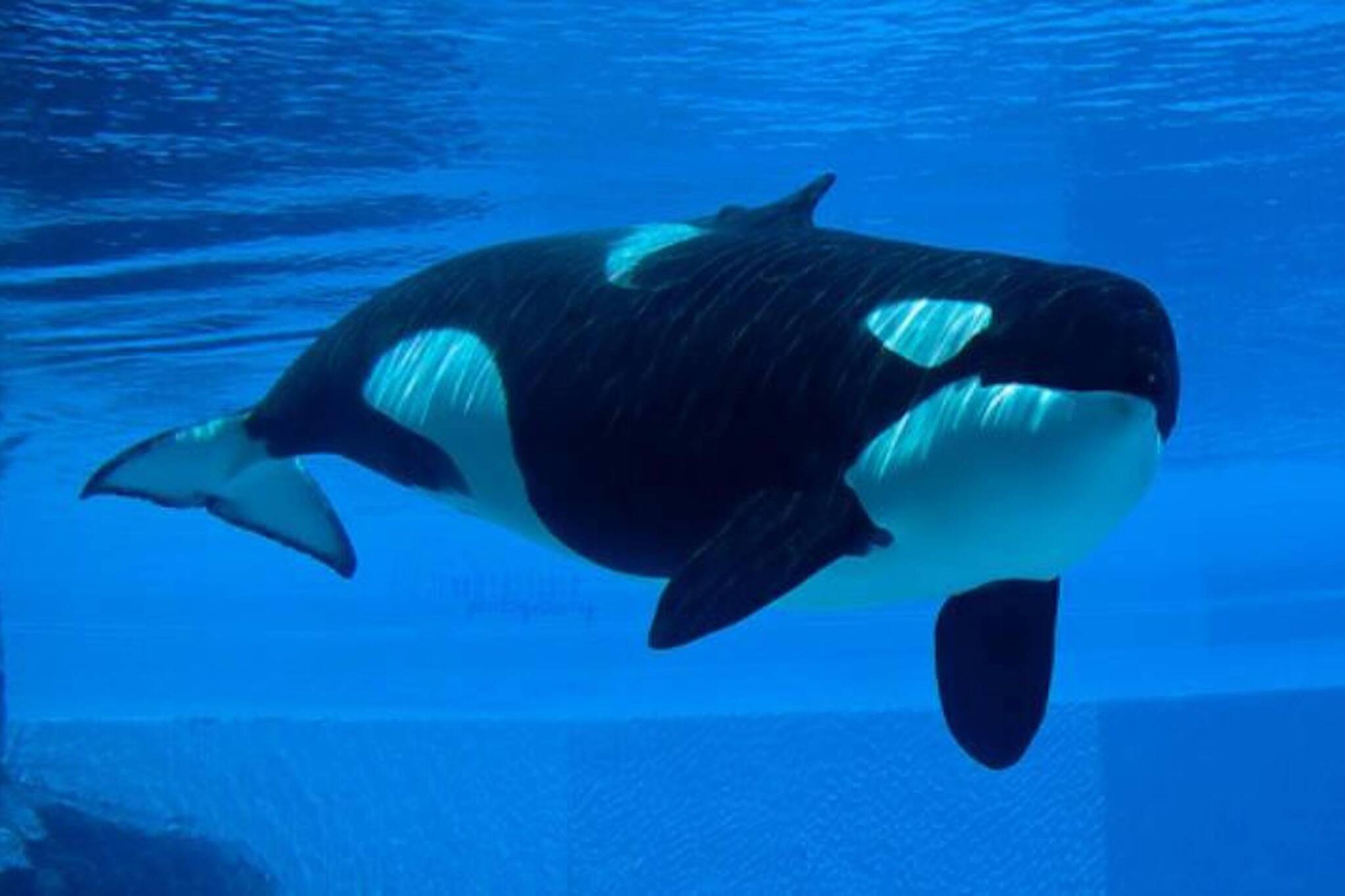
Lonely orca Kiska reportedly buried in Marineland's gruesome animal boneyard
Days after Kiska the Marineland orca, also known as the world's loneliest whale, died following decades in captivity, advocates say the large mammal has been buried among many other deceased animals on the theme park's property.
According to a Marineland press release, the 47-year-old whale died on Friday, March 10, after her health had been declining for weeks.
Known for living in solitude for the last 12 years and captured on camera multiple times banging her head against her tank's concrete walls or not moving at all, Kiska was the last captive orca in Canada.
But now, the sweet angel has reportedly met a gruesome end, being buried on Marineland property among other dead park animals.
Marineland expert and fierce advocate for the attraction's shutdown, Phil Demers, shared drone footage of Kiska's final resting place over the weekend.
We can confirm that Kiska, MarineLand’s last orca has been buried at the park. This, sadly is her final resting place. May she rest in peace. #RIPKiska pic.twitter.com/GUKbY2NtAN
— Phil Demers (@walruswhisperer) March 11, 2023
A bare, snowy landscape appears to be dotted with prints and wheel markings, with an excavator parked nearby.
Other media outlets, including CHCH, confirmed that a necropsy had already taken place to figure out the cause of death and that Kiska had been buried.
Back in 2013, Marineland was ordered to stop burying animals on its properties after the Toronto Star reported that four mass graves with thousands of animals had been identified.
That article said bodies of killer whales, belugas, deer, dolphins, buffalo, bears, seals, sea lions and other animals have been buried on the property.
Marineland did not respond to multiple requests from blogTO, including whether the burial order had since been rescinded and whether the park can now buy animals on site.
They also did not independently confirm to blogTO whether Kiska was buried on site.
According to The Whale Sanctuary Project, Kiska died of a bacterial infection; "Marineland Canada announced today that the orca Kiska has died of a bacterial infection. The news is devastating to all of us who have been working toward the time when she could be retired to sanctuary."
Kiska being buried in a random, unmarked spot on Marineland property amongst the mass graves that hold hundreds upon hundreds of bodies - including those of her calves and tankmates - makes me feel physically ill.
— Amity ~ Komodo Enjoyer 🦎 (@delphindae) March 12, 2023
She is now, quite literally, being left to rot in Marineland.
In various comments on Demers' video, he confirmed that it's common practice for the park to bury deceased animals on its property.
This fast turnaround burial has left many people shocked, wondering why the park did not perform some sort of ceremony or erect a special marker.
Others wondered why Kiska's body wasn't donated for research or museum purposes.
Her body could have definitely been used as a learning tool for future generations, showcasing the archaic practice of stealing animals from their natural habitat and holding them captive.
Kiska was stolen from her family back in 1979 near Iceland at the age of three; she had lived the rest of her life in aquariums and amusement park tanks.
Latest Videos
Latest Videos
Join the conversation Load comments







